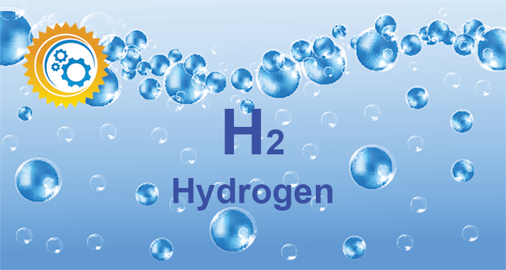What’s All The Hype about Hydrogen?

By Erin Whitney
This is an excerpt of a story from ACEP’s blog, From the Grid.
Hydrogen is getting a lot of hype these days. In 2021, the U.S. Department of Energy issued a “hydrogen shot” — similar to the country’s ambitious moon shot half a century ago — seeking to reduce the cost of clean hydrogen to $1 for 1 kilogram in one decade. The price of clean hydrogen is several times that right now. And global investment in the production of hydrogen and hydrogen carriers has skyrocketed. According to the International Energy Agency 2021 Global Hydrogen Review, the “global capacity of electrolysers, which are needed to produce hydrogen from electricity, doubled over the last five years to reach just over 300 [megawatts] by mid-2021. Around 350 projects currently under development could bring global capacity up to 54 [gigawatts] by 2030. Another 40 projects accounting for more than 35 GW of capacity are in early stages of development. If all those projects are realized, global hydrogen supply from electrolysers could reach more than 8 [megatonnes] by 2030.”
So, why hydrogen, why now, and what is its relevance to microgrids and Alaska? Well, let’s take a step back to understand how hydrogen fits into the energy economy and landscape.
Hydrogen has long been discussed as a potential energy panacea. Electrolysis was discovered and the first fuel cells were developed in the early 1800s. And General Electric produced hydrogen fuel cells to generate electricity for the Apollo and Gemini space missions in the 1960s.
In 2006, my first research assignment after graduate school at the National Renewable Energy Laboratory investigated vehicular hydrogen storage via physical adsorption into porous solid materials. The materials couldn’t store nearly enough hydrogen to make them an economical storage solution at the time. As national political administrations came and went, both before and after that, so also did the buzz about hydrogen.
And here we are now in 2022. With a looming climate crisis, driven by rising global carbon dioxide levels, but also accompanied by plunging costs of renewable energy sources, there may be an economical path forward not just for hydrogen but for renewably produced clean hydrogen. While the volumetric density of hydrogen is low relative to other fuels, its specific energy — by mass — is high. In other words, that little hydrogen molecule packs a punch, but it requires large volumes to store and deliver. It has immediate potential to help clean up the hard-to-decarbonize sectors of industrialized society, including steel, cement and fertilizer manufacturing. These industries use massive quantities of energy and are currently huge contributors to global carbon dioxide emissions, in large part because the energy is generated from fossil fuels.


